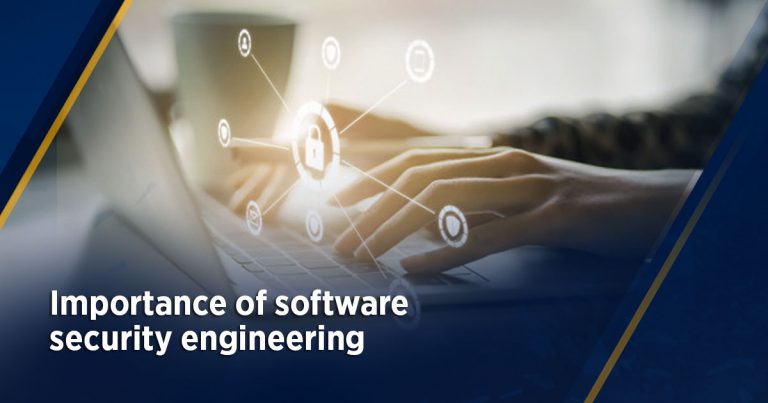The incorporation of software security engineering in the SDLC accrues a slew of benefits such as the ability to identify and fix security-related vulnerabilities, making everyone in the ecosystem a stakeholder in addressing security-related issues, among others.
The global digital landscape is becoming more distributed, complex,
transformative, innovative, and growth-oriented. If this is good news
then the converse is also true in the form of rising cyber threats.
According to Cybersecurity Ventures, the expanding footprint of
cybercrime is expected to cause a loss of $6 trillion globally by 2021.
And with more number of enterprises looking at embracing or migrating to
technologies like the Internet of Things (IoT), AI, Big Data, and
Cloud, and others, the stakes for securing the IT infrastructure by
incorporating security testing in their value chain have become high.
Let us delve into some mindboggling figures to understand the enormity
of the issue.
- Around 4.1 billion records were breached in the first half of 2019 (Source: Varonis)
- Cybercriminals attack every 39 seconds, 2,244 times a day on an average (Source: Univerity of Maryland)
- 57% of companies faced phishing or social engineering attacks (Source: Ponemon Institute)
The above-mentioned real threat scenarios have multiplied the risk for companies with cybercrime arguably becoming the number one challenge facing the global IT industry. However, the good news is that several stricter legislations have been passed across the world to counter this menace. These include HIPAA, SOX, ISO 27001, and GDPR, among others. The increased sophistication of cyber-attacks means the traditional software security measures are not enough. Today, enterprises need software security, which is far more comprehensive, future-focused, and built into the product development lifecycle.
In other words,
security testing should be an integral part of the build cycle instead
of being an adjunct to the testing process as per the traditional
testing model. Any software security testing exercise should offer a
360-degree view of an organization’s security ecosystem. This helps to
identify and fix the blind spots or vulnerabilities and anticipate the
forthcoming threats – to secure the organization and accelerate its
transformation and growth. So, like quality engineering, security
engineering needs to be implemented to enhance the capabilities of an
organization in fighting cybercrime.
What is security engineering?
It
is a process of adding and implementing security controls into the IT
infrastructure including the information system to make the former an
integral part of the organization’s operational capabilities. In the
DevSecOps model of development, security should be integrated into all
phases of the SDLC with every department and stakeholder accountable in
ensuring the security of the system. Security engineering services
involve practices and principles that are incorporated in the design,
development, implementation, and execution of technical controls.
Implementing security engineering into the product build cycle
The steps of implementing security engineering services into the SDLC are as follows:
- Develop criteria for monitoring system security followed by a baseline design for the security system. Thereafter, conduct security threat analysis and vulnerability studies.
- Validate the security baseline design, lay down performance indicators for security software and hardware, and fix threats and glitches using modifications in system design and using risk management techniques.
- Design the security system and integrate the same into the SDLC.
- Address any security threats and concerns using risk management techniques.
Software security engineering involves security testing services, processes, techniques, and tools to address any security-related issue in the SDLC. It ensures the IT infrastructure is resistant to sudden system failures or any intentional attack. The other benefits are:
- The software secured through software engineering is able to identify, pre-empt, withstand, and recover from malicious attacks.
- Helps to build reliable and glitch-free software which can continue to function in the face of malware attacks, abuse or misuse, and unintentional failures.
- Allows quick, effective, and efficient fix of the attacks directed at the software application and its surrounding ecosystem.
- Offers greater agility and speed for teams dealing with application security testing.
- Ensures early identification of vulnerabilities, which if left unattended could be exploited by hackers to swoop into the system. The built-in security measures can allow these vulnerabilities to be fixed and ensure the transfer of data between modules is made more robust through encryption.
- The principle of ‘secure by design’ is implemented. Thereafter, through automated application and web security testing the security review of code is executed. It empowers developers to leverage secure design patterns while building software modules.
- Reduces the cost of redevelopment as the built-in secure software design detects and fixes security issues during the development phase.
Conclusion
In
the face of growing cybersecurity scares, enterprises should leverage
software engineering services to ensure the code under development
remains free of glitches and can withstand (and recover from) any
malicious threat. This helps to secure the interests of the
organization, clients, and end-customers.
Article Source:
https://community.nasscom.in/

No comments:
Post a Comment